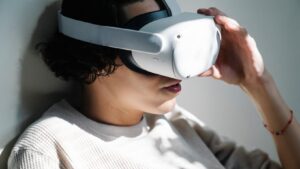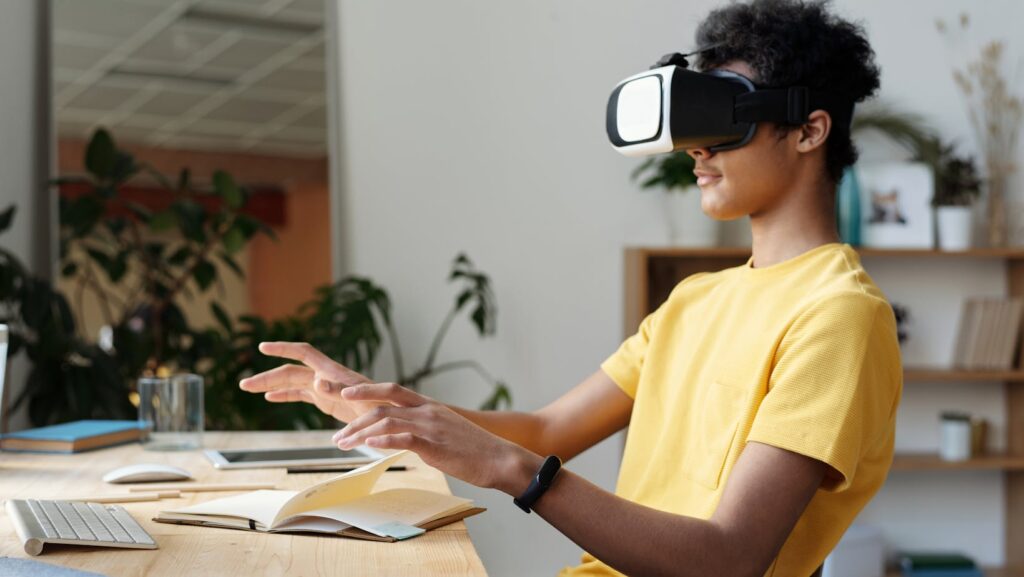Exploring the world of immersive technologies, I’ve often been asked about the distinct advantages of mixed reality (MR) over augmented reality (AR) and virtual reality (VR). In the realm of MR, the lines between the physical and digital worlds blur, offering users a unique interactive experience that combines the best of both AR and VR. Unlike AR, which overlays digital content onto the real world, and VR, which creates entirely virtual environments, MR seamlessly integrates digital elements into the user’s physical surroundings. Additionally, advancements in naked AI picture technology are enhancing these immersive experiences by providing more realistic and interactive digital elements.
Exploring Mixed Reality: A Primer
Defining Mixed Reality

As I delve into the realm of mixed reality (MR), I find it essential to understand its distinct characteristics that set it apart from both augmented reality (AR) and virtual reality (VR). MR combines virtual elements with the real world, creating a seamless integration of digital and physical environments. Unlike AR, which overlays digital content onto the real world, and VR, which immerses users entirely in a virtual environment, MR merges the two to enhance the user experience in a way that feels natural and intuitive.
The Evolution of Mixed Reality Technology
Reflecting on the evolution of mixed reality technology, I witness a transformative journey that has revolutionized the way we interact with digital content. From its inception as a concept that blurred the boundaries between physical and digital realities, MR has rapidly advanced to offer immersive experiences that push the boundaries of traditional human-computer interaction. The integration of spatial mapping, depth-sensing cameras, and advanced algorithms has paved the way for MR applications that not only entertain and educate but also revolutionize industries such as gaming, healthcare, and manufacturing. The evolution of MR technology continues to break new ground, promising a future where the digital world seamlessly integrates with our physical surroundings to enhance everyday experiences.
What Is The Advantage Of Mixed Reality Over AR Or VR Experiences?
Enhanced Interactivity and Realism

In mixed reality, the advantage over AR and VR lies in the enhanced interactivity and realism it offers. With MR, I can interact more naturally with virtual objects in real-time, creating a truly immersive experience. The spatial mapping and depth-sensing capabilities of MR technology allow me to engage with digital content as if it were part of the physical world around me. This heightened level of interactivity and realism sets MR apart from AR and VR experiences, where the fusion of virtual and real elements opens up new possibilities for dynamic user engagement.
Broader Application Potential
One key advantage that mixed reality has over AR and VR is its broader application potential. With MR, I have the flexibility to blend virtual content seamlessly into my real-world environment, allowing for a wide range of applications across various industries. From interactive training simulations in healthcare to virtual prototyping in manufacturing, the versatility of MR opens up opportunities for innovative solutions that go beyond the limitations of AR and VR. This expanded application potential positions mixed reality as a transformative technology with diverse benefits across different sectors.
Seamless Integration With the Real World

One of the significant advantages of mixed reality compared to AR and VR is its seamless integration with the real world. In MR experiences, I can see and interact with virtual objects overlaid onto my physical surroundings, creating a seamless blend of the digital and physical realms. This integration not only enhances user immersion but also enables more practical applications in fields such as architecture, where virtual models can be overlaid onto real construction sites for better visualization. The ability of mixed reality to integrate virtual elements with the real world with precision and accuracy sets it apart as a powerful tool for enhancing everyday experiences.
By prioritizing intuitive user interfaces, collaboration, shared experiences, and accessibility for diverse users, MR stands out as a transformative technology with vast potential for enhancing the way we interact with digital content. As user adoption and awareness continue to grow, the integration of MR into everyday experiences is poised to reshape industries and drive innovation to new heights.

